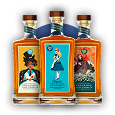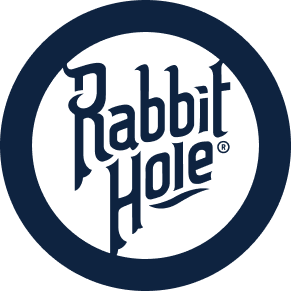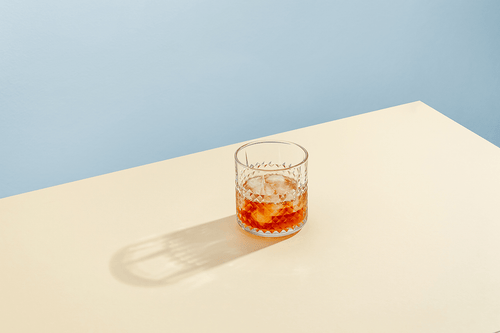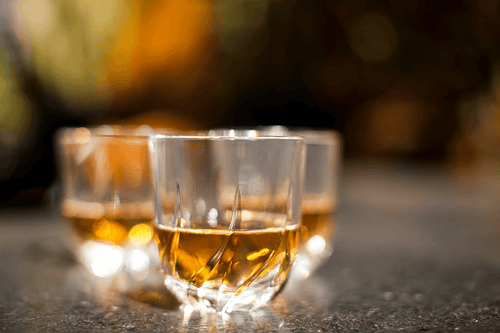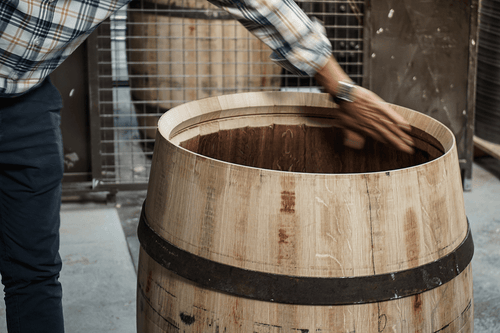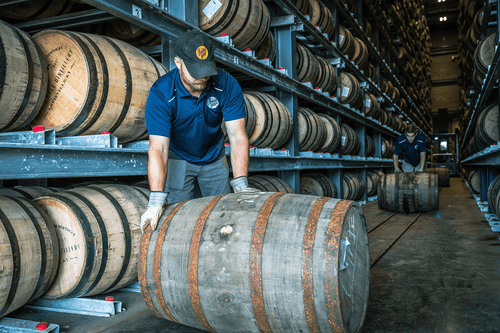What Is Sweet Mash Bourbon?
WHAT IS
SWEET MASH BOURBON?
Bourbon is, without a doubt, "America's Native Spirit." The earliest production of wine and beer goes back to ancient times throughout Europe, Asia, and Africa. Vodka's origins also lie in Europe and Asia, and tequila is famously a product of Mexico. But bourbon was born in the United States, and Kentucky is home to nearly 70 distilleries along the Bourbon Trail. From rye whiskey to sour mash to sweet mash, bourbon is more popular today than ever. But how did we get here?...

From Rum to Whiskey to Bourbon
During the Revolutionary War, sugar was hard to come by, which meant colonists couldn't make rum. They turned to what they had available: rye and corn. After the war, Kentucky was granted statehood in 1792, transitioning from being a Virginian county to joining the Union as the 15th state. It quickly became populated by citizens hoping to grow corn for food and beverages. Just after the turn of the 19th century, Europeans arriving in America brought a new idea: aging spirits in charred barrels. Soon after, the word “bourbon” was used for the first time in print.
It was in the 1830s when one person entered the scene and changed nearly everything about whiskey and bourbon production. Dr. James C. Crow was a trained chemist from Scotland who became the master distiller at Oscar Pepper distillery. He used the new Coffey column still rather than copper pots, a technique that brought consistency to the spirits. Crow could reliably measure the product's strength, acidity, and sugar levels using scientific tools and approaches rather than the old methods, like gunpowder and a match. But most importantly, Crow is considered to be the inventor of the sour mash process.
Sour Mash Bourbon
The sour mash recipe is attributed to Crow, though others note that Catherine Carpenter of Kentucky used the same recipe 20 years earlier. The production process starts the same as with many other spirits: Combine the grain(s) with water and yeast, heat, and ferment in order to produce natural alcohol. The next step is where Crow and Carpenter innovated: They added to the mixture sour mash, or leftover mash — also called the backset — from a previously distilled batch. This reduces the pH level, which increases acidity and helps prevent harmful bacterial growth, making a safer product.
Using the backset brings consistency to the current and future batches, much like a live starter does for loaves of sourdough bread. The result, sour mash whiskey or bourbon, comprises the majority of that sold in the United States, due to the consistency and safety of the process. But recently, some distillers have begun producing sweet mash bourbon.
Sweet Mash Bourbon
The process to make sweet mash bourbon or whiskey is as old as the sour mash process. At the same time Catherine Carpenter was recording her sour mash recipe in the early 1800s, she was also notating her sweet mash recipe. But unlike sour mash, the sweet mash process does not use any backset during fermentation. Distillers simply heat the grains with water, add yeast, and let it ferment.
Since the lack of backset increases the risk of harmful bacteria growth, all equipment must be kept spotlessly clean to guard against bacterial contamination. This is most likely a primary reason why sour mash became a more popular production process than sweet mash, given the lack of basic understanding of germs and sanitation until well after the Civil War. Until Prohibition, what few distilleries did make sweet mash whiskey and bourbon were able to charge a premium for their products, since the educated consumer understood the production challenges.
Another potential downside to not adding backset is the difficulty in maintaining consistency from batch to batch. Modern distilleries are well-equipped to handle most issues that might come with the sweet mash process. But the distiller must still pay close attention to each step of the process to ensure consumers get the product they expect. For the home distiller, however, these concerns might be too difficult to overcome.
Why Make Sweet Mash Bourbon?
From a production standpoint, sweet mash bourbon seems like a questionable idea at best. The distillers must take greater care with the yeast, since they are using new yeast and not reusing the yeast, or backset, from a previous batch. They have to ensure bacteria does not grow and spread in the batch. And they must implement and maintain immaculate cleaning and sanitation standards to keep the equipment and environment pristine.
To some, however, these downsides are outweighed by many advantages, starting with control. Beginning each batch fresh allows distillers to have total control over ingredients and in what measure. It also allows them to use lower temperatures for fermentation, thereby reducing fusel oils and smoothing out the taste. Finally, it allows the product to enter the barrel at a lower proof.
From the consumer's standpoint, there are many advantages to sweet mash bourbon. The low barrel-entry proof amplifies the flavor. Less acid provides a sweeter taste, not necessarily from the sugars, but by letting the natural flavors of the grains shine. The end product may also have more fruity and floral tones. All of this results in a smoother mouthfeel and over greater enjoyment for the bourbon connoisseur looking for something different.
As a reminder, all bourbon, whether sour mash or sweet mash, must contain at least 51% corn, though the average is 65% to 75%. It must be aged for at least two years in a brand-new, single-use, charred white oak barrel. It must enter that barrel at more than 62.5% alcohol by volume (ABV), and be bottled at 40% or more ABV (80 proof). Distillers must also account for losses due to evaporation — the Angels' Share — and absorption into the barrel — the Devil's Share.
The devil is certainly in the details when it comes to making sweet mash bourbon. As more and more distillers become willing to implement the procedures and protocols required to produce it, sweet mash bourbon should continue to grow in popularity both in the United States and worldwide.














